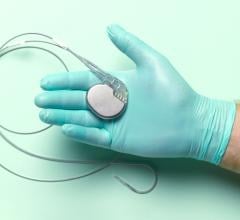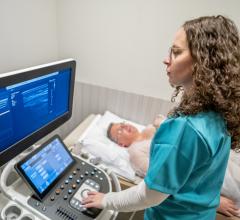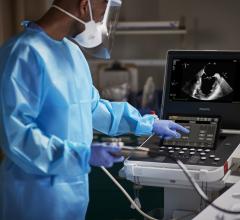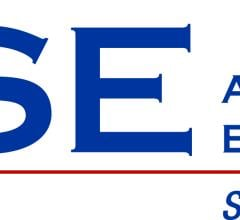
August 20, 2020 – More than 350 posters featuring cutting edge research on the advances in cardiovascular ultrasound were presented during the American Society of Echocardiography (ASE) 2020 annual meeting, Aug. 8-10. A special group of investigators were selected as the ASE Foundation’s Top 20.
These early career abstract presenters were selected by the Scientific Sessions Program Committee abstract chairs based on the scientific merit of their research projects and were awarded complimentary registration to the ASE 2020 Virtual Experience from the Foundation.
“The abstracts selected for presentation at our Scientific Sessions represent the very best cardiovascular imaging research in the United States and around the world," said Michael Main, M.D., FASE, from Saint Luke's Mid America Heart Institute, Kansas City, Mo., and ASE 2020 abstract chair. "The breadth and depth of these presentations is truly remarkable, and includes novel applications of advanced technologies such as three-dimensional imaging, ultrasound enhancing agents, and artificial intelligence in both pediatric and adult populations.”
The Alan S. Pearlman Research Award, was given to Priyanka Asrani, MBBS, Boston Children’s Hospital, Boston. This annual award of $1,000 is supported by a grant from Elsevier to the ASE Foundation and is presented to the highest scoring early career investigator. Asrani’s research titled “Technically Successful Fetal Aortic Valvuloplasty Acutely Improves Left Heart Output” focuses on evaluating left heart output before and after fetal aortic valvuloplasty (FAV), a surgery that is done on the fetus in utero. The findings show a significant increase in mitral valve velocity-time interval and blood flow through the left heart after a technically successful FAV. Ultrasound and echocardiography both play a very important role in successfully diagnosing a heart abnormality in a fetus and performing a FAV
surgery.
Another research study highlighted in the Top 20 is “To Give or Not to Give? Ultrasound Enhancing Agents Remain Underutilized Tools for the Quantification of Left Ventricular Ejection Fraction.” The use of ultrasound enhancing agents (UEAs) has been demonstrated to improve left ventricular ejection fraction (LVEF) quantification and impact clinical decisions. In this study, researchers from Mount Sinai Hospital in New York, N.Y. found that contemporary guidelines are not sufficiently robust to guide sonographers in the decision to use ultrasound enhancing agents (UEA) and that higher utilization of UEAs is necessary for accurate TTE LVEF quantification.
A study out of Seoul, Korea titled “Global Longitudinal Strain for the Prediction of Sudden Cardiac Death in Patients with Hypertrophic Cardiomyopathy” investigated the predictive value of left ventricular global longitudinal strain (GLS) for sudden cardiac death (SCD) in hypertrophic cardiomyopathy patients. It was found that GLS could better discriminate patients at increased risk of SCD, especially in the low- and intermediate-risk groups. GLS is a robust predictor and provided additive prognostic value to the HCM Risk-SCD model.
The Top ASE 20 Abstracts:
(in no particular order)
• Technically Successful Fetal Aortic Valvuloplasty Acutely improves Left Heart Output
• Acquisition of Diagnostic Echocardiograms by Novices: Results from A Multicenter Pivotal
Prospective Clinical Trial Using Artificial Intelligence
• Global Longitudinal Strain Analysis of the Single Right Ventricle: Leveling the Playing Field
• The Role of Screening Fetal Echocardiogram after the Prenatal Detection of Extracardiac
Malformations
• Automated Quantitative Modeling of the Aortic Root by Real-Time 3D-TEE Predicts Optimal
Valve Size for TAVR Planning when Contrast CT is Contraindicated
• Can Grading of Diastolic Dysfunction be Automated?
• Comparison of Echocardiographic and Invasive Assessment of Right Ventricular Stroke Work
Index
• Patient Prosthesis Mismatch Post-TAVR is Associated with Lack of Positive Left Ventricular
Remodeling
• Increased Post-systolic Strain Index During 1st Interstage Predicts Medium-Term Death or
Transplantation in Children with Hypoplastic Left Heart Syndrome
• Abnormal Apical Longitudinal Strain Ratio Reliably Distinguishes Amyloid from Other
Cardiomyopathies with Hypertrophy
• Global Longitudinal Strain for the Prediction of Sudden Cardiac Death in Patients with
Hypertrophic Cardiomyopathy
• Longitudinal Assessment of Right Atrial Conduit Fraction Provides Additional Insight to Predict
Adverse Events in Pediatric Pulmonary Hypertension
• Using Simulation to Assess Cardiology Fellow Performance of Transthoracic Echocardiography
• To Give or Not to Give? Ultrasound Enhancing Agents Remain Underutilized Tools for the
Quantification of Left Ventricular Ejection Fraction
• Blunted Augmentation of Left Ventricular Outflow Tract Gradient with Exercise - An Independent
and Simple Predictor of Worse Clinical Outcomes in Non- and Labile-Obstructive Hypertrophic
Cardiomyopathy
• Changes in Right Ventricular Function and Myocardial Deformation after Transcatheter Tricuspid
Valve Edge-to-Edge Repair using the MitraClip
• Maternal Hyperoxygenation Testing in Fetuses with Hypoplastic Left Heart Syndrome: Predicting
Postnatal Physiology
• Fetal Aortic Valvuloplasty Impacts Left Ventricular Longitudinal Strain in Fetuses with Severe
Aortic Stenosis
• Turbulence and Power Loss in Hypertrophic Cardiomyopathy Patients with Mitral Valve Systolic
Anterior Motion: Insights from 3D Computational Flow Modeling
• Using Deep Learning to Extract Novel and Quantitative Imaging Features from Stress
Echocardiography Images Acquired Using Contrast and Non-Contrast Images
All ASE 2020 abstracts can be viewed at www.onlinejase.com/article/S0894-7317(20)30227-3/pdf

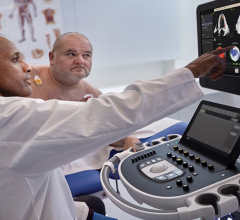
 June 12, 2024
June 12, 2024 

